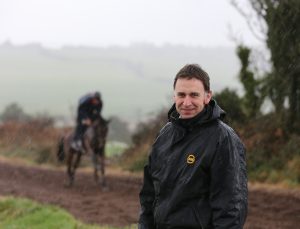A post mortem carried out by the BHA on Many Clouds, who valiantly ended Thistlecrack’s unbeaten record over fences on Saturday, has revealed that the ten-year-old’s death had been caused by a severe pulmonary haemorrage.
The 2015 Grand National winner put up a brave performance to get the better of the Colin Tizzard-trained star by a head in the Grade 2 Cotswold Chase at Cheltenham.
Subsequent to the race, the son of Cloudings collapsed shortly after the winning line and although treated by the on-course team of vets, was unable to be saved.
At the time it was suspected that Many Clouds had suffered a heart attack but the evidence now proves it was internal bleeding, which is a rare occurrence. The fatality rate within jump racing from similar episodes is just 0.048% of runners.
Acting Chief Veterinary Officer for the BHA, Tony Welsh, said: “Episodes such as this are rare, and can occur in horses which have no underlying health issues, and amongst all disciplines of sport horses.
“In spite of the rarity of these incidents, as a sport we are determined to do more to understand what causes these symptoms, and whether more can be done to prevent it.
“Several studies have been commissioned, as part of the £32million-plus invested in veterinary science and research by the sport though the Horserace Betting Levy Board (HBLB) since the year 2000. The overall fatality rate in British racing has fallen by a third in this period.”
In November, a number of horses at Oliver Sherwood’s yard wore heart rate monitors including the Trevor Hemmings-owned charge. His heart and recovery rate were judged to be normal with no signs of anything outside of the norm.
He had shown symptoms of post-race ataxia in the past, which is a condition characterised by a loss of balance in walking after exercise.
Welsh added: “Post-race ataxia and similar symptoms are linked to an increase in body temperature after exercise and can be treated by providing the horse with water. It is not uncommon in racehorses or other sport horses.
Our thoughts remain with everyone connected to the horse
“Despite some reports following the incident, there is no existing veterinary evidence which links these symptoms with racehorse fatalities, and the post-mortem results have categorically proved that the symptoms exhibited by Many Clouds in the past were in no way present or associated with his sad death at Cheltenham.
“Our thoughts remain with everyone connected to the horse. Any loss of life is regrettable, and we continue to use research, safety measures, regulation and education to reduce fatality rates to as close to zero as possible.”
Tributes have continued to pore out on social media to a horse that was considered by many to be one of the best jumpers the sport had.



